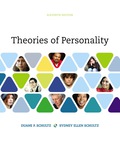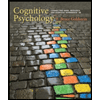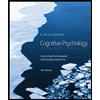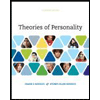
To explain:
How Roger’s childhood interest led to his interest in interviewing and therapy.
Introduction:
Loneliness faced by Rogers in his childhood later led him to interact with people as more as he can. This became the base of his therapy and he emphasized interview sessions of the patient can give exact insight about his problems. Therapist should allow patient to tell the solution for his problem that will bring confidence in the patient to face challenges of life, if the solution told by the patient himself works
Explanation of Solution
When Roger was in his childhood, he mostly stays alone. His parents always show priority towards his older brother that led him to stay alone. His life was not social due to his parent’s pre-requisite conditions about not to play, not to hang outside, not to drink made his lifeless social.
This later made him study books as much as he can. But when he interacted with the patients, then his desire or deprivation from being social forced him to interact with people more and more. So, he started taking interviews, and that gave him insight also. Insight about if he will take interviews during therapy then the actual problem will be exerted out. The patient himself can actually elaborate on his problem and can solve them with few directions by the therapist.
Same like many personality theorists, Roger too had troubled childhood, but loneliness faced by him in his childhood led him to interview his patients during therapy.
Want to see more full solutions like this?
Chapter 10 Solutions
EBK THEORIES OF PERSONALITY
- Describe the four characteristics of generalist practice. Select one of the characteristics and provide an example of how you see yourself implementing that characteristic in the field. How will this implementation affect the client? Please cite in text source and list references. This discussion question provides specific content that will assist in preparing for the ASWB licensing exam.arrow_forwardProfessional Development: What does it mean to you to be a social work professional? How does the NASW Code of Ethics relate to how you act as a professional? Please cite in text source and list references.arrow_forwardExplain how social work is different from other helping professions and why, providing at least three examples. Explain how you can partner with other helping professionals throughout your career in the field. Describe the development of social work as a profession. Please cite in text source and list referencesarrow_forward
- Can you give me a summary of these two videos Gandhi: the road to freedom (2009) https://www.youtube.com/watch?v=boPkMCJSYSsarrow_forwardWhat are the 3 key ideas described in the Video: EcoSense for Living, Future Food https://www.pbs.org/video/future-food-rcje6j/arrow_forwardWhat would be a good description of health for an individual today? How does gender, culture and the practice of health infulence your description?arrow_forward
- Write a love poem about someone longing for a sandwich. Make it a sonnet, and give it a tone that straddles a serious love poem and whimsy appropriate for a poem about a sandwich.arrow_forwardI need help finding 16 pop psychology self-help tyoe book on dating& relationshiparrow_forwardCan you make good 12 discussion questions when it comes to attraction to tattoos an to non tatoosarrow_forward
 Ciccarelli: Psychology_5 (5th Edition)PsychologyISBN:9780134477961Author:Saundra K. Ciccarelli, J. Noland WhitePublisher:PEARSON
Ciccarelli: Psychology_5 (5th Edition)PsychologyISBN:9780134477961Author:Saundra K. Ciccarelli, J. Noland WhitePublisher:PEARSON Cognitive PsychologyPsychologyISBN:9781337408271Author:Goldstein, E. Bruce.Publisher:Cengage Learning,
Cognitive PsychologyPsychologyISBN:9781337408271Author:Goldstein, E. Bruce.Publisher:Cengage Learning, Introduction to Psychology: Gateways to Mind and ...PsychologyISBN:9781337565691Author:Dennis Coon, John O. Mitterer, Tanya S. MartiniPublisher:Cengage Learning
Introduction to Psychology: Gateways to Mind and ...PsychologyISBN:9781337565691Author:Dennis Coon, John O. Mitterer, Tanya S. MartiniPublisher:Cengage Learning Psychology in Your Life (Second Edition)PsychologyISBN:9780393265156Author:Sarah Grison, Michael GazzanigaPublisher:W. W. Norton & Company
Psychology in Your Life (Second Edition)PsychologyISBN:9780393265156Author:Sarah Grison, Michael GazzanigaPublisher:W. W. Norton & Company Cognitive Psychology: Connecting Mind, Research a...PsychologyISBN:9781285763880Author:E. Bruce GoldsteinPublisher:Cengage Learning
Cognitive Psychology: Connecting Mind, Research a...PsychologyISBN:9781285763880Author:E. Bruce GoldsteinPublisher:Cengage Learning Theories of Personality (MindTap Course List)PsychologyISBN:9781305652958Author:Duane P. Schultz, Sydney Ellen SchultzPublisher:Cengage Learning
Theories of Personality (MindTap Course List)PsychologyISBN:9781305652958Author:Duane P. Schultz, Sydney Ellen SchultzPublisher:Cengage Learning





